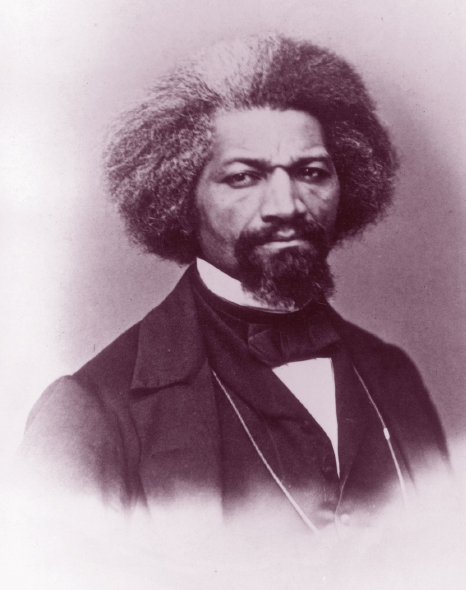Ethnic and Minority Newspapers
Printed Page 76
Historically, small-town weeklies and dailies have served predominantly white, mainstream readers. However, since Benjamin Franklin launched the short-lived German-language Philadelphische Zeitung in 1732, newspapers aimed at ethnic groups have played a major role in assimilating immigrants into American society as well as helping them retain and solidify their cultural identity. Today, the United States has many thriving foreign-language daily and weekly newspapers.
These newspapers serve some of the same functions for their constituencies—immigrants, disabled veterans, retired workers, gay and lesbian communities, the homeless—that mainstream papers serve, covering similar events, issues, trends, and developments. However, they interpret these from the perspective of their constituents’ priorities and interests. For example, a paper catering to gay men and lesbians may publish articles on new rulings regarding gay marriage—a topic often covered in mainstream papers. Yet the minority paper’s articles will focus on legal developments threatening gay men’s and lesbians’ rights and present ideas for taking defensive action.

African American
The first newspaper published in the United States aimed at black readers, Freedom’s Journal, operated from 1827 to 1829. It opposed the racism apparent in many New York newspapers and offered a voice for the antislavery, or abolitionist, movement. Since 1827, more than 3,000 newspapers have been edited and owned by African Americans, including Frederick Douglass’s North Star. With an average life span of nine years, early publications took stands against race baiting, lynching, and the Ku Klux Klan. They also promoted racial pride long before the Civil Rights movement began. More than 180 mostly weekly African American papers survive today, including Baltimore’s Afro-American, New York’s Amsterdam News, and the Chicago Defender, which celebrated its one hundredth anniversary in 2005. But this number is down from 300 in 2000. As they have throughout their history, these papers typically offer oppositional viewpoints to the mainstream press and record the daily activities of black communities by listing weddings, births, deaths, graduations, meetings, and religious functions.
Spanish Language
Bilingual and Spanish-language newspapers have long served a variety of Mexican, Puerto Rican, Cuban, and other Hispanic readerships. By 2010, the United States had more than a thousand Spanish-language papers, which reached more than seventeen million readers nationwide—an increase of five million since 1984.7 The oldest Hispanic daily in the United States, New York’s El Diario-La Prensa, has been catering to Spanish-language readers since 1913, while Los Angeles’s La Opinión, founded in 1926, is the nation’s largest Spanish-language daily, with a circulation of a hundred thousand (down 20 percent from 2007). These two papers merged in 2004 to create ImpreMedia.8 Serving the large Cuban and Cuban American population in the Miami area, El Nuevo Herald has a circulation of over seventy-seven thousand.

Asian American
In the 1980s, hundreds of small papers published in various languages arose to serve immigrants from the Philippines, Pakistan, Laos, Cambodia, and China. About four hundred online and print Asian American papers are published in the United States, serving the more than sixteen million Asians and Asian Americans. For example, more than fifty small U.S. papers are now printed in Vietnamese. Serving many Chinese immigrants, the Sing Tao Daily, founded in 1938 in Hong Kong, is among the largest Chinese-language U.S. media operations. Ethnic papers like these help readers both adjust to foreign surroundings and retain ties to their traditional heritage. In addition, these papers often cover stories that are downplayed in the mainstream press but that hold interest for Asian populations.
Native American
An activist Native American press has provided oppositional voices to mainstream American media since 1828, when the Cherokee Phoenix appeared in Georgia. The Native American Press Association has documented more than 350 different Native American papers, most of them printed in English but a few in tribal languages. Currently, national papers serving this audience include the Native American Times, which offers a Native American perspective on “sovereign rights, civil rights, and government-to-government relationships with the federal government,” and Indian Country Today, which is owned by the Oneida Nation in New York State and has the largest circulation of any Native American paper. These smaller papers provide a forum for debates on tribal conflicts and concerns. They also often signal the mainstream press on issues—such as gambling or hunting and fishing rights—that have significance for larger American society.
Arab American
According to the Pew Project for Excellence in Journalism’s “State of the News Media 2009,” the number of Arab American newspapers grew to eighty-five by 2009 (up from seventy-seven in 2007). Based in Dearborn, Michigan, the Arab American News is the oldest U.S. Arab American newspaper, founded in 1984. It is a free paper, supported only by advertising, and has reported a weekly circulation of thirty thousand. In the Eastern United States, Aramica is among the largest Arab American newspapers. A bilingual paper, it began in Brooklyn in 2002 and has reported a nationwide weekly circulation of fifty thousand.